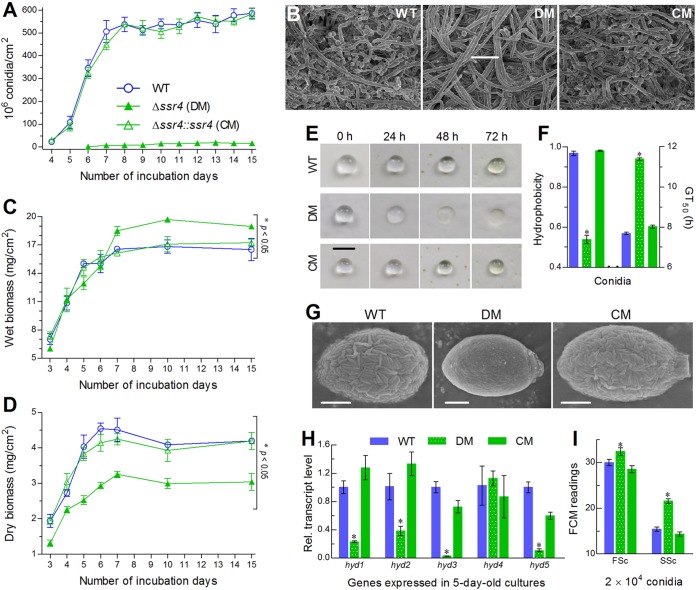FIG 2.
Ssr4 is required for aerial conidiation and cell hydrophobicity of B. bassiana. (A) Conidial yields quantified from the SDAY cultures during a 15-day incubation at the optimal regimen. The WT, deletion mutant (DM), and complemented mutant (CM) strains are shown. (B) SEM images for the status of conidiation in the 5-day-old SDAY cultures. Bar, 10 μm. (C and D) Wet (fresh) and dry biomass levels from the SDAY cultures, respectively. (E) Visual images for the stability of dew-like water droplets on the surfaces of the SDAY cultures over 72 h. Note that the water droplet gradually sank and disappeared in the Δssr4 culture. Bar, 3 mm. (F) Conidial hydrophobicity assessed in an aqueous-organic system and median germination time (GT50) at 25°C. (G) SEM images for ultrastructural features of conidial coat. Bars, 10 μm. (H) Relative transcript levels of five hydrophobin genes (hyd1 to hyd5) in the 5-day-old SDAY cultures of ssr4 mutants versus WT. (I) Conidial size and complexity (density) indicated by the forward scatter (FSc) and side scatter (SSc) readings from flow cytometry (FCM) of 2 × 104 conidia per sample. All SDAY cultures were initiated by spreading 100 μl of a 107 conidia/ml suspension per plate (9-cm diameter). Values are means ± SD (error bars) from three replicates. Values that are significantly different (P < 0.05) for the Δssr4 mutant and its control strains by Tukey’s HSD test are indicated by an asterisk.

